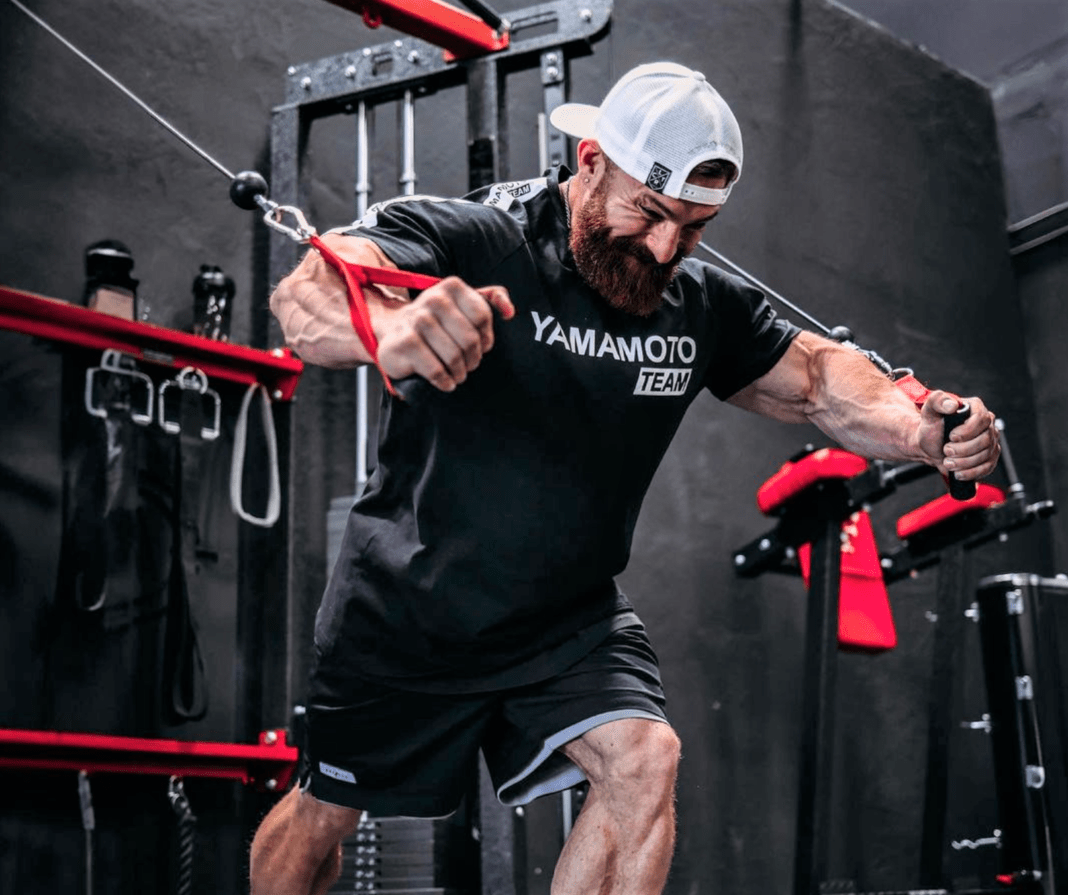Flex Lewis is the GOAT of 212 bodybuilding. The division for pro bodybuilders weighing 212 or less was formed in 2012, and 5’5″ Lewis dominated it for the next seven years, winning seven straight 212 Olympia titles and going 17-0 before competing for the final time in 2018. (He officially announced his retirement this year at age 38.) I first interviewed Flex Lewis way back in 2004 after driving him to his FLEX magazine photoshoot; and, for FLEX, I wrote the first American article about him. I never could’ve predicted then how far that 20-year-old, under-sized Welsh kid would rise. But, from that first day, he became a good friend, and I did numerous interviews with him, followed him through workouts, and wrote countless articles with him over the next 15 years. From 2012-14, I wrote Lewis’ monthly column for FLEX magazine, transcribing his answers to my questions. What follows are the best training tips from those columns.
These are Flex Lewis’ top 10 training tips.
— Greg Merritt
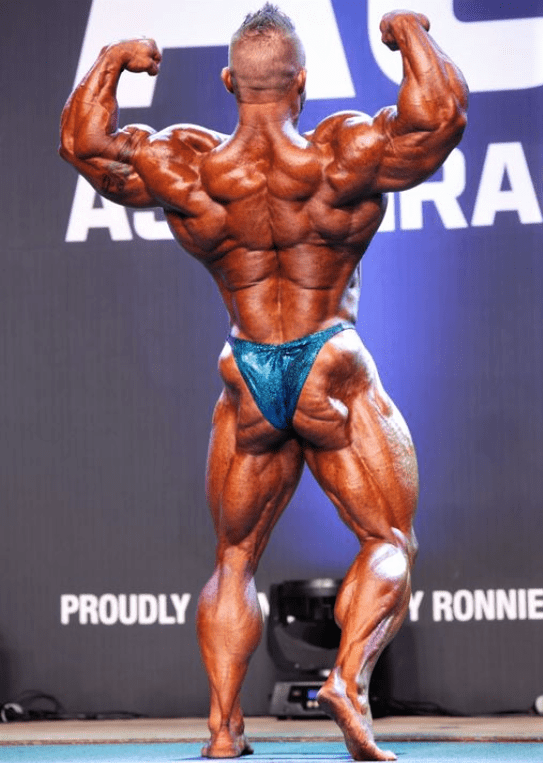
1. USE HIGH REPS.
“The key isn’t how many reps you do. The key is how hard you’re working the muscle. And for me it might take 10 reps before I really start to exhaust the muscle, so that first 10 [reps in a set] is a setup for the last 10 when I really push it and keep the tension on the muscle for as long as possible. A lot of people think sets of three or four reps really heavy are harder than 15–20 reps with a lighter weight. But if you do three reps, you get in and you get out. I want to keep the set going, keep the tension on the muscle. That’s the hard work that makes you grow. I’m not saying you should always do 20 reps, but don’t be afraid to go to 20 or more sometimes if that’s what works your muscles best. The important thing, always, is how hard you’re working.”
2. SELF-MOTIVATE BEFORE SETS.
“My motivator could be a variety of things. I’ll piss myself off before a set to feed off that anger. Generally, I can piss myself off just by making up some silly thing in my head. But I learned when I was young and powerlifting it could be a double-edged sword to get overly aggressive. If I’m doing a heavy deadlift or something I’ll want to get aggressive enough to get everything out of myself but not so much that I’m not focusing the way I should on the lift’s technique and on my muscles.
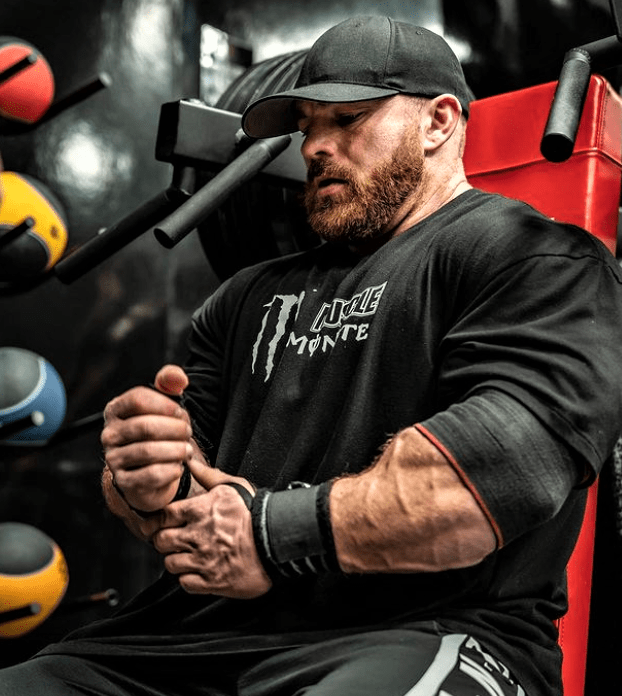
I’m just trying to stimulate the muscles. I’m not trying to be the world’s strongest bodybuilder. I’m a firm believer in the mind-to-muscle connection. If I can first visualize myself doing something, then it’s much easier for me to make it happen. That’s important in bodybuilding, but it’s also important in anything you do in life. If you tell yourself you can’t do something, you’ll never do it. If you tell yourself you can do it and you visualize yourself doing that over and over, then chances are you’ll do it.”
3. TRY HYBRID CALF TRAINING.
“I can’t really relate to having stubborn calves. Believe me, I know a lot about having a stubborn chest or back, but calves have always been my easiest growers. They grow so fast, I go long periods without training them just to keep them in balance. The thing is, though, when I do train them, I train them hard. There’s no reason to just do what some might call a ‘maintenance workout,’ trying to stay where you’re at. The reason to train anything with weights is to stimulate muscle growth. So, I have easy-growing calves, but I also use a brutal routine that can help those who have hard-growing calves.
Hybrid training is basically a giant set but it involves exercises with weights and exercises with just bodyweight, and it incorporates lots of stretching and squeezing. A lot of bodybuilders do six to eight lazy sets for calves after quads and call it a workout, and then they wonder why their calves don’t grow. Your calves are small compared to your quads, but they’re not small when compared to your biceps. Also, your calves are used to working with low-intensity all day just walking. They need volume and intensity to grow. Hybrid training serves up both.
It really started with just me getting sadistic, doing a lot of deep stretches for holds and really strong contractions. You can really go medieval on your calves while just using your bodyweight. With the weight out of the way, it lets you focus on the stretches and holds for as long as you can stand the pain. I call them ‘giant sets from hell,’ and if you try them you’ll see why. At the end of each rotation, I stretch for a minute and then go back to the first exercise. I go through each rotation three or four times.”
FLEX LEWIS CALF GIANT SET ROUTINE
Standing Calf Machine Raise
Bodyweight One-leg Calf Raise on Riser
Bodyweight Calf Raise on Riser
Bodyweight Calf Raise on Floor
✷ 15 reps of each without resting between exercises, stretch for one minute between giant sets, 4 giant sets
You can do similar hybrid calf giant sets with seated calf raises and calf raises on a leg press machine. Do 8-12 giant sets total per calf routine.
4. SOMETIMES LESS IS MORE.
“I changed my training split this year. Neil [Hill] has me doing more rest days. Now I train two days on and then take one day off. Before I’d just keep training. I’d go 10 days in a row before I took a break. My training partners would be like, ‘We’re taking today off, right?’ And I’d go, ‘No, let’s go train.’ But the rest days have a made a big difference this year. I think the days you spend out of the gym you rejuvenate your mind as much as your body so you’re ready to give it your all the next time you workout.
You want to be charging back to the gym, fully ready to give it your all. If you’re dragging yourself into the gym just because you don’t want to be home that day, you’re probably not going to get your best workout. So, I can’t tell you what training split to use, but generally it’s best to train less often and not more often. As bodybuilders, we want to always do more, more, more. More weight, more protein, more workouts. Sometimes less is more. Try dividing your body into four workouts and then do two days on and one day off. That way body parts get worked once every six days. Then you can adjust from there if you need more or less work.”
5. TEAM UP.
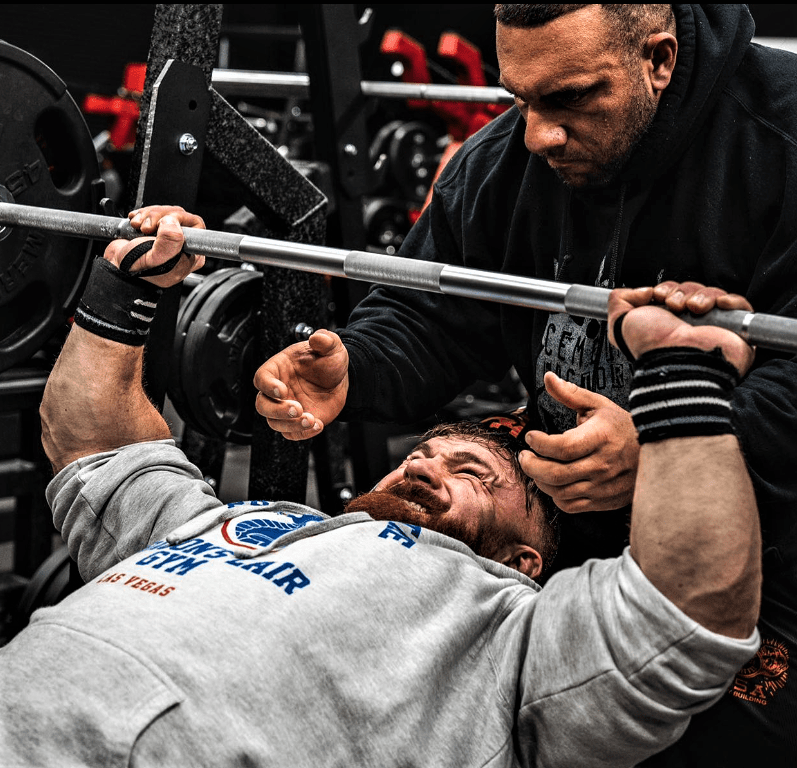
“Training partners are essential to my workouts. They don’t have to be top-level bodybuilders, but they have to have that drive to better themselves. Usually, the guys who aren’t top-level are more motivated to train harder to gain size. The crucial thing is they have to be dependable. They have to show up on time and be ready to go and want to push me as hard as they push themselves. I like someone in my face aggressively when I start fatiguing on the last couple reps. I want them to get in my head and help me force a couple extra reps out. So, when I’m home, I always train with partners.”
6. GET GLUTES.
“For me, even when I was a kid and playing rugby, my glutes were the first muscles I noticed develop. So there’s always been plenty of muscle there. When it comes to conditioning, it’s all about diet and cardio. I don’t do the treadmill. I do my cardio outside. I do road-walking. I alternate between a fast pace and a slower pace. I’ll do that for 20 minutes every other day in the off-season. At the height of my contest prep, I might do 40 minutes in the morning and 20-30 minutes at night. When I was living in Wales, it was hilly, so the cardio was always changing from flat to incline. That’s the ideal way to do it. But if your terrain doesn’t change, alter the pace instead.
I don’t do any specific exercises to bring my glutes in. It comes with the diet and the cardio and posing, posing, and more posing. I tense my glutes hard every time I strike a pose. It helps bring in that area, but it also reminds me to stay tight all over. If your glutes are flexed, you’re going to tense your abs too and keep your whole body tight.”
7. TRAIN LOWER BACK HARD.
“Your spinal erectors go from your butt to your head, running alongside your spine like a two-lane road. They’re crucial for protecting your spine, but mostly they’re buried under other muscles, so they’re not very flashy. When most people talk about spinal erectors, they mean the visible muscles of the lower back. These are important for training because they provide support crucial to so many exercises. Everything from squats to bench presses to standing calf raises use some lower back strength for stabilizing. They’re also important for bodybuilding contests because they indicate how hard you trained and—when they’re striated into a Christmas tree—how hard you dieted.
I work them pretty hard with rack deadlifts. With those I’m pulling the barbell off the support bars, which are set just below my knees. I came from a powerlifting background, so rack deads are always part of my back routine. Rack deads hit a lot of muscles, but I always feel ’em most in my lower back. I do about five or six working sets, and I get at least 10 reps even when I use seven plates [675 lbs.]. I also do some back extensions after that for higher reps to really finish off my lower back.
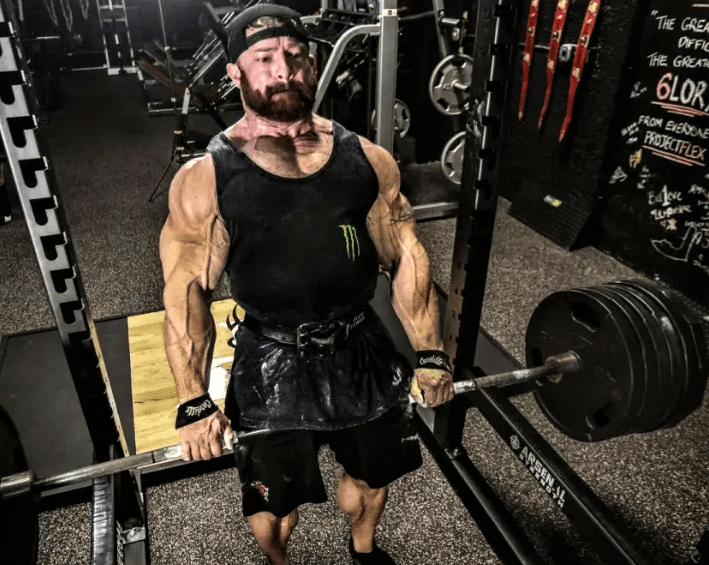
With back extensions, I sometimes do them the traditional way with my hands across my chest, but I usually do them with a reach and a squeeze. What I do is I reach as far down and forward as I can at the bottom, and then I bring my arms back as I rise, so at the top my elbows are back and I’m contracting my lower lats as well as my erectors. It’s like the same movement I make when I start my rear lat spread. I’ve been doing that for a number of years, and it really helps to keep all that tension on the lats and lower back at the same time. I picture my Christmas tree popping out with every squeeze.”
FLEX LEWIS LOWER BACK ROUTINE
Rack Deadlift — 5-6 sets x 10-12 reps
Back Extension — 3 sets x 20 reps
8. STRENGTHEN THE MIND-TO-MUSCLE CONNECTION.
“That mind-to-muscle connection is the most important thing in my training success. Without it I may have remained known mostly for my legs, like I was back in the day when I was an amateur in Wales. I’ve just recently learned how to really hit my chest so my front delts don’t take over. Arms were the first area where I really learned how to focus on them in a way I was missing before. Before, my forearms would always take over. And then I started doing certain exercises and really squeezing, and I became less concerned with the weights.

And over time I taught myself to squeeze and get connected with the muscles, and the weights obviously came back up with time. To strengthen the mind-to-muscle connection you have to work at it. You have to think about the muscle you’re training contracting from full stretch to full contraction. Picture it contracting. Picture it growing. Never just do the work. Never focus on the weight or the bar or handle moving. Always focus on the muscles doing the work and feel them working. With time you’ll build up that mind-to-muscle connection, and then you’ll really grow.”
9. USE GIANT SETS FOR GIANT TRICEPS.
“Here’s a triceps routine I really like. I do a warmup giant set and then three or four working giant sets at the same station: five exercises in rotation for 20 reps each with no rest between sets. A typical giant set consists of: wide-grip rope pushdowns, then narrow-grip rope pushdowns, then EZ-bar pushdowns, then one-hand pushdowns, then overhead rope triceps extensions. So, all told, I’m doing either 400 or 500 reps for triceps in short order. Afterward, my triceps are already fully pumped, and I’ve spent a lot of reps targeting strong contractions to really focus on my tri’s.”
FLEX LEWIS TRICEPS GIANT SET ROUTINE
Wide-grip Rope Pushdown
Narrow-grip Rope Pushdown
EZ-bar Pushdown
One-arm Pushdown
Rope Overhead Triceps Extension
✷ 20 reps of each without resting between exercises, 1 warmup giant set, 3-4 working giant sets
10. AVOID INJURIES.
“I always warmup thoroughly before I do anything. I remind myself that cutting corners could result in an injury that derails or even ends my career, so I always put the time in to stretch out and warmup the muscles I’m working. And I think over years of working out I learned which exercises are good for me and which are bad for me. They say learn to love the things you hate. But there’s a difference between doing something that just doesn’t work for your body and doing something that you avoid because it hurts but in a good way, not in a dangerous way.
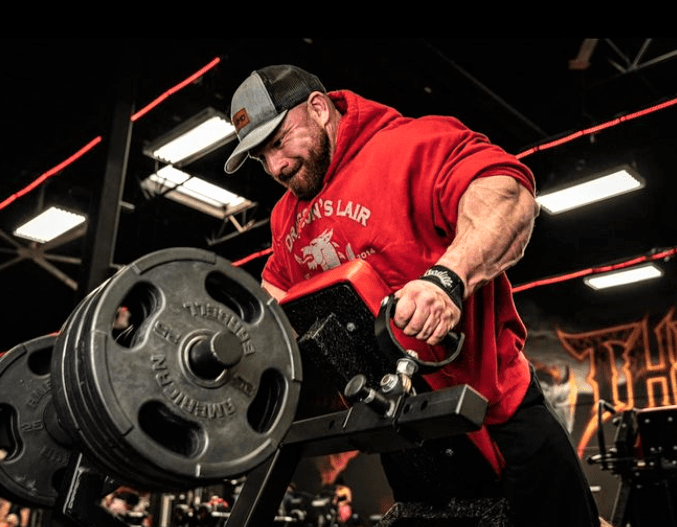
I love training, and I love going hard and heavy. But hard and heavy is for a certain time and place. There’s no way I could go hard and heavy all the time, or I’d tear myself down to the point where I have so many aches and pains I can’t train right for four weeks or something. Another thing is I always take an extended rest period after a contest. And that’s great for my body, and it’s great mentally too, so I come back with more energy and enthusiasm than ever. Learn to take time off when needed, listen to your body, and get enough warmups. It just takes an instant to injure yourself seriously, so make sure you’re mentally and physically ready for every set.”



































